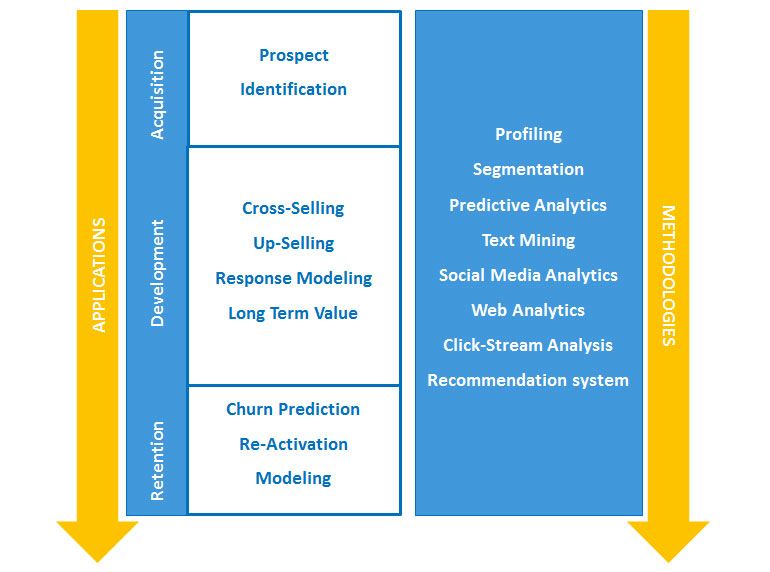During recent years, the field of marketing analytics has substantially evolved on two dimensions. First, new methodologies have been developed and rigorously tested in the conventional disciplines of database marketing. Examples of these innovative techniques are ensemble learning, Bayesian modeling or text mining. Second, the principles of marketing analytics have found their way into new domains and applications, such as direct marketing for non-profit, social media marketing, search engine marketing and mobile marketing. The key word within these new developments is creativity. Creativity is found in the methods that analysts use and on the application side. The ICMA focuses on both aspects, and it fills a large gap in the business and academic environment by digging in into the hottest trends in database marketing!

While the intensified use of the Internet as a marketing channel has widened its scope, disciplines within marketing analytics are traditionally categorized along three pillars of Customer Relationship Management (CRM) following the customer lifecycle.
• Customer acquisition refers to the persuasion of individuals or businesses to engage in a relationship with the company, i.e. to become customer
• Customer development aims at a widening or deepening of the relationship with the customer. In the former case, the customer buys other products and services within the range of the company, while in the latter, the customer purchase more or more expensive products
• Customer retention comprises efforts to ensure that customers continue to do business with the company.
Marketing Analytics Applications / MethodologyExplanation
| Prospect Identification | The process of managing customer prospects and inquiries in order to extend the current customer base |
| Cross-Selling | The task of selling additional products or services to existing customers in order to extend their current product portfolio |
| Up-Selling | The task of extending/replacing existing products in a customer’s product palette by an upscale extension/version |
| Response Modeling | The process of sending out targeted mailings in order to increase the response rate on catalogue campaigns |
| Lifetime Value | The process of estimating the present value of future cash flows that a customer will generate according to the customer’s relationship |
| Churn Prediction | The process of identifying whether or not a customer will leave the company |
| Re-Activation Modeling | The process of activating “sleeping” customers or recapturing lost customers out of the database |
| Profiling | The process of describing different customer groups (e.g. complainants versus non-complainants) based on available customer information |
| Segmentation | The process of splitting up the customer database in homogeneous groups of customers in order to set-up different marketing actions to each of them |
| Predictive Analytics | The task of predicting future customer behavior based on replicating past customer behavior assuming that different types of customers behave equally over time |
| Text Mining | The process of converting and analyzing textual customer information like customer emails into a quantitative format in order to extract relevant knowledge out of it |
| Social Media Analysis | The task of scraping, converting and analyzing data from social media like Twitter, Facebook, Linkedin, product review websites, etc. to gain customer knowledge. |
| Web Analytics | The process of using website usage data like browsing paths, visitor origin data, sales funnels, etc. to optimize the functioning of a website resulting in increased sales |
| Clickstream Analysis | The task of analyzing website visit and page request server log data in order to profile web users resulting in an optimized website and advertising personalization |
| Recommendation system | The task of employing past behavioral data to personalize customer offerings |

Leave a Reply